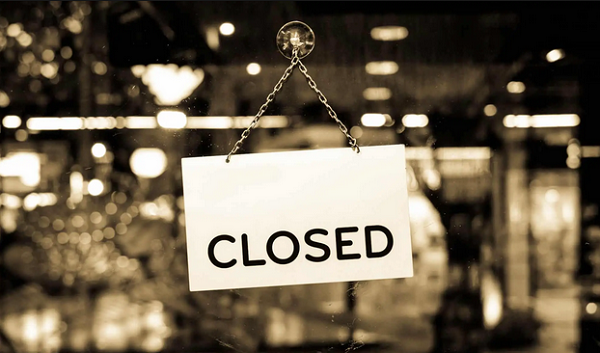Reasons for more business failures compared to insolvency figures suggest
Daryl Ching, a Toronto-based chartered financial analyst, has worked with dozens of small business owners over the years. Some of them, unfortunately, fell on hard times and had to close.
When that happens, he’s seen some business owners sell personal assets to cover outstanding debt. He’s seen others manage to sell their businesses to investors. And occasionally, the operators of some failing companies have just walked away.
But one thing he’s never seen? “In my 12, 13 years in business, I’ve seen companies close up, and zero of them went through a regular corporate bankruptcy. None of them,” he said.
Business insolvencies – when business owners go through the formal process of a bankruptcy or a proposal – have climbed to levels not seen since the financial crisis of 2008, driven by indebted companies struggling with interest rates and softened consumer demand. But even those official insolvency statistics don’t tell the full picture. Economists and professionals who work with small and medium-sized businesses warn that the actual number of businesses that fail is much higher, with other data suggesting the problem is growing.
Regular insolvency statistics come from the federal Office of the Superintendent of Bankruptcy.
A bankruptcy allows a business owner to be absolved of most or all of their debt, though they may have wages garnished and their credit score will be severely diminished for at least seven years. In a proposal, the owner can renegotiate the terms of their debt – such as how much is repaid and the timeline for paying it back – with less financial impact.
In the first quarter of this year, there were 2,003 insolvencies (1,599 bankruptcies and 404 proposals) across Canada, which was an increase of 87 per cent over the same quarter last year. It was the highest three months of insolvencies since the beginning of 2008.
And that’s not all.
Every month, Statistics Canada tracks the number of active businesses based on whether they made their monthly payroll filings with the Canada Revenue Agency. Because of a slight lag in reporting and analyzing, the most recent data are from January, which showed 936,327 active businesses in the country. There were also 43,121 closed businesses, which means companies that had reported employees to the CRA in December but not in January.
Some of those “closed” businesses may report employees again in the future, but many do not. Statscan counts permanently closed businesses as “exits,” and reports those at a six-month lag because the data are based on tax filings. For July of 2023, the most recent month available, Statscan reported there were 42,010 closings, of which 16,416 were permanent. That same month, only 346 businesses filed for bankruptcy or a proposal.
Statscan researcher Amélie Lafrance-Cooke and Alex McDougall, of the Innovation, Science and Economic Development department, released a study last fall in which they analyzed characteristics of businesses that filed for bankruptcy and those that just “exited.”
They found that businesses that filed for insolvency were more likely to be larger, have more assets – and also have more debt. “They’re much more highly leveraged than businesses that exit,” Ms. Lafrance-Cooke said in an interview.
Not all exits are necessarily bad economic news, as some businesses close because the owner retired or the company was acquired. Statscan does not track the reason for an exit.
Likewise, not all insolvencies are the end of the road. In fact, a restructuring through insolvency may be a way to rescue a viable business, said David Lewis, an insolvency trustee at BDO Canada and a spokesperson for the Canadian Association of Insolvency and Restructuring Professionals.
“It’s not a true reflection of business failures,” he said of the insolvency statistics, because some businesses can survive after renegotiating their debt.
However, there’s more: Some small business failures show up in what the federal Office of the Superintendent of Bankruptcy calls “consumer bankruptcies,” of which there were 33,885 in the first quarter of this year (up 14 per cent from the same quarter last year).
That happens because many small business owners have to make personal guarantees on their commercial leases or loans. If the business fails, the creditor may go after the owner’s personal assets, including their house or any investments.
“There’s a lot of personal risk to an individual” who owns a business, Mr. Lewis said.
The Statscan study found bankruptcies were proportionately higher in industries that have valuable assets, such as manufacturing equipment or land.
Steven Graff, a partner at Aird and Berlis who specializes in restructuring, said developers and construction companies are being particularly hit hard now by high interest rates and an inability to refinance their debt. “Real estate is the most challenged sector right now,” he said.
Mr. Ching said failing small businesses will sometimes try to renegotiate their debt with vendors without going through the formal insolvency process. He said it happened to him once, when a client in dire straits offered to pay only 40 per cent of his bill.
“What am I going to do? I’ll take it,” he said. “It’s a company closing down. I’m going to take whatever I can get.”
This article was first reported by The Globe and Mail












